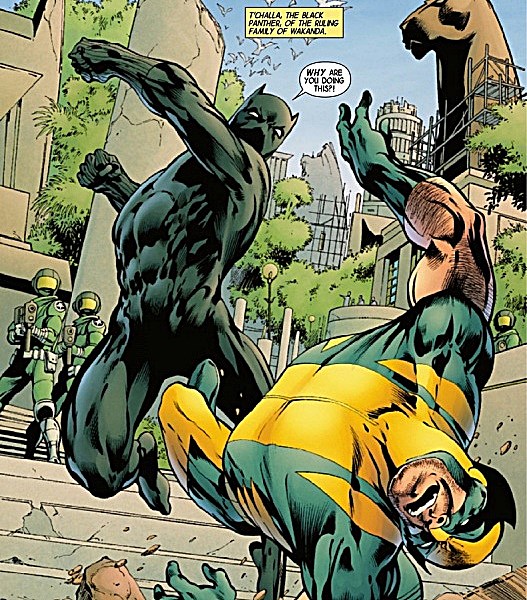
Good Morning POU!
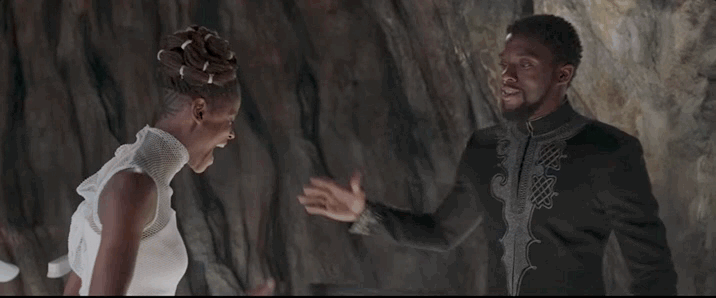
THE JOURNEY TO WAKANDA: AFROFUTURISM AND BLACK PANTHER
(reprinted from Comics Alliance)
When Marvel announced the Black Panther film slated for a 2018 release, with Chadwick Boseman playing the titular character, a lot of fans lost their cool. Black Panther, an Avengers alum since 1967, represents more than the Marvel Studios movie machine’s first foray into a leading super hero of color. Hailing from the fictional African nation of Wakanda, Black Panther and his scientifically superior homeland are an example of a sub-genre of fiction in which Africans (and African Americans) display a prowess and understanding of technological and scientific advancement. Some called this Black Sci-Fi, but this fiction is perhaps more commonly called Afrofuturism.
What makes Black Panther interesting isn’t just his race. He’s the latest in a series of on-screen Marvel superheroes of color, including Halle Berry as Storm in the X-Men franchise, Wesley Snipes as Blade, and Anthony Mackie as Captain America’s literal wingman, Falcon, in Captain America: The Winter Soldier.
Though this space could always use some sprucing, it’s an area where we’ve generally seen slow and steady progress. What makes Black Panther an especially vital character to bring to a broader audience is his pedigree and the introduction of his native homeland, Wakanda.

Created by Marvel heavyweights Stan Lee and Jack Kirby, Black Panther appeared in 1966’s Fantastic Four #52. He was one of the first Black superheroes in mainstream American comics. T’Challa, Black Panther’s alter ego, is imbued with strength and agility by the Panther God. Because of his divine connection, which runs through his ancestors, he’s the chieftain and ruler of Wakanda.
Ordained by the Panther God, T’Challa is in some ways a religious leader, as well as a monarch and the protector of the kingdom. That elevates him above the sort of dual identity problems that most superheroes have to endure. This triple role has always been one of my favorite aspects of the Black Panther canon, not only making him a fierce Black hero, but a polymath as well.
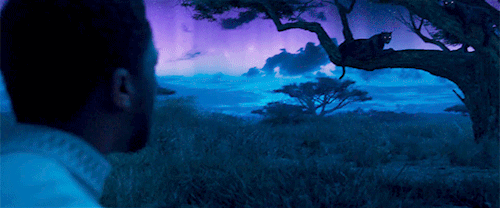
In addition to T’Challa’s unique abilities, his Panther suit is laced with vibranium, the nation’s most precious resource. Vibranium is well known to those in Marvel fandom. Not only is it one of the strongest metals on Earth, it’s also one of the elements in Captain America’s shield, as well as one of the key plot devices in Avengers: Age of Ultron. In fact, we were teased with a Black Panther nod in the movie, with villain and vibranium dealer Ulysses S. Klaw presented as a threat to Wakandan national security.
Mainly in part to its abundance of vibranium, Wakanda is considered one of the richest and most scientifically advanced countries in Marvel’s fictional landscape. Due to the country’s intentional isolationism, Wakanda is ahead of it’s surrounding countries in technological advancements, creating computer systems impervious to external attack. Wakanda also specializes in advanced medicine and healing, as a by-product of a strong religious order — an equally intriguing counterpart to its savvy for tech and science.
The religious practices of Wakanda are intertwined with the monarchy of the nation, making for no separation of church and state. There’s something distinctly otherworldly about Wakanda; it is in some ways lightyears ahead of the rest of the human race, while maintaining ancient religious and cultural values. The attire is of ancient African garb, similar to Kenyan and Ethiopian tribal wear, and serves a significant cultural purpose with its associations to the ruling deity, the Panther God.
But more importantly, in establishing Wakanda, Marvel strayed away from the usual “primitive” and “wild” tropes associated with Africa, as seen in books like Tarzan, creating a self-sustaining, futuristic power-house that never felt the effects of colonialism or white imperialism.
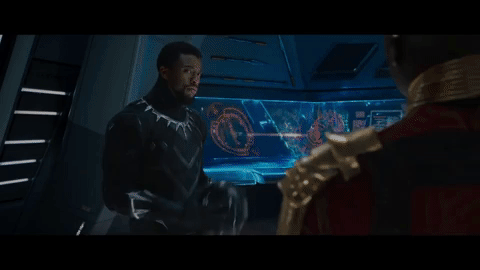
This is undoubtedly the most amazing thing about the nation. Wakanda shines as mecca built on technology and magic, without a trace of poverty or disease. It is truly a reflection of Afrofuturism at its finest. Marvel, as a pop cultural machine, took influence from the Civil Rights movement and crafted two beautiful comic concepts in the 1960s, first with the X-Men in 1963, and then with Black Panther in 1966.
Interestingly, Black Panther’s Atrofuristic environment was crafted way before the genre’s name was coined. In 1994, Mark Dery first used the term “Afrofuturism” in his essay, “Black to the Future.” As a style, the term refers to art that retells the experiences and realities of black people through a sci-fi lens. For example, Marvel’s Truth: Red, White and Black takes the historical Tuskegee experiments and reinvents its victims as the original subjects used for the Super Soldier serum that created Captain America. Other fictional takes include inventive retellings of the Transatlantic Slave Trade, showcasing slave narratives as alien abduction stories.
Afrofuturism transcends fictional literature, influencing musical artists such as Parliament, Janelle Monae and Outkast, all of whom explore alien abduction and android/human interactions in their work.
But sadly, it’s a sub-genre that’s rarely acknowledged in larger pop culture. More often than not, people of color are excluded from sci-fi and fantasy worlds, and when they are included, it’s often in token roles, as with Idris Elba’s Heimdall in the Thor movies. When a fictional Africa is illustrated in print or on screen, it’s stereotypically presented as a war-ravaged, poverty-stricken continent. Aside from Eddie Murphy’s Coming to America, few fictional African nations are shown celebrating an abundance of culture and achievements.
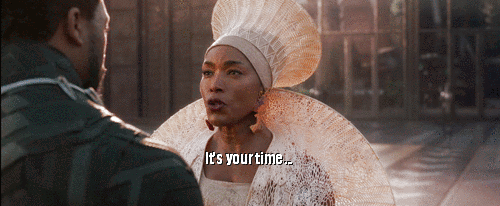
The Black Panther film heralds more than just a superhero of color. He brings with him a movement rarely seen in mass media. In fact, Black Panther and his homeland of Wakanda may be Hollywood’s first blockbuster foray into Afrofuturism, challenging audiences to see a cast of all-African characters who aren’t defined by crime and subservience, but instead by pride and excellence. If nothing else, it shows Marvel’s potential to stand at the vanguard of change and innovation.
